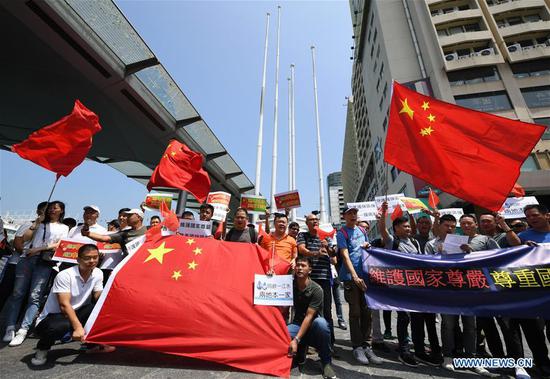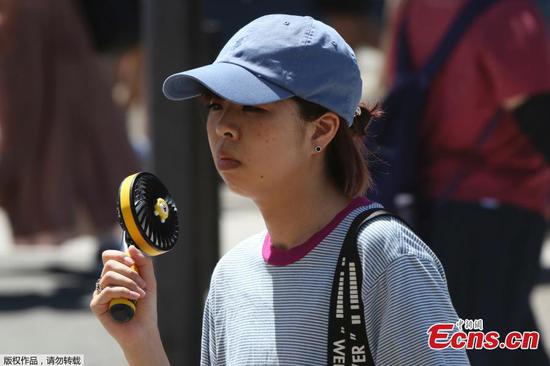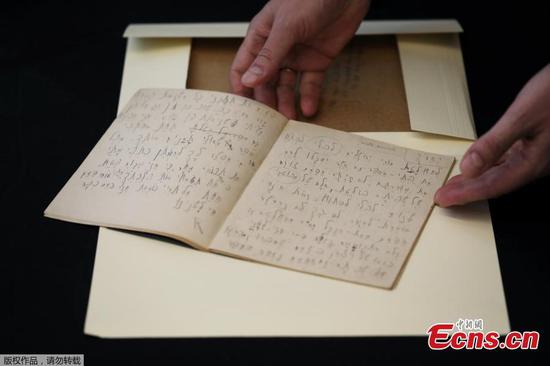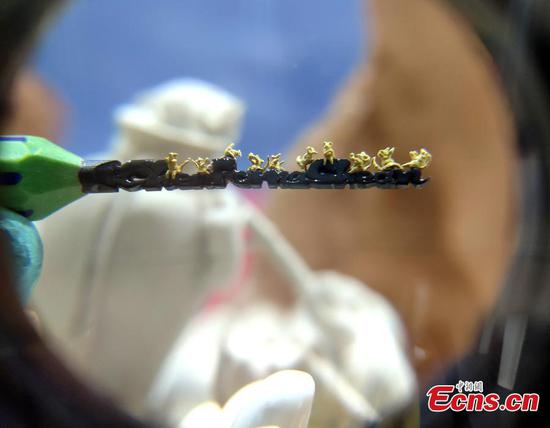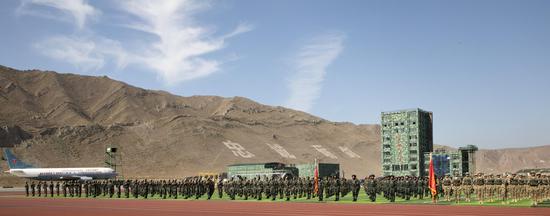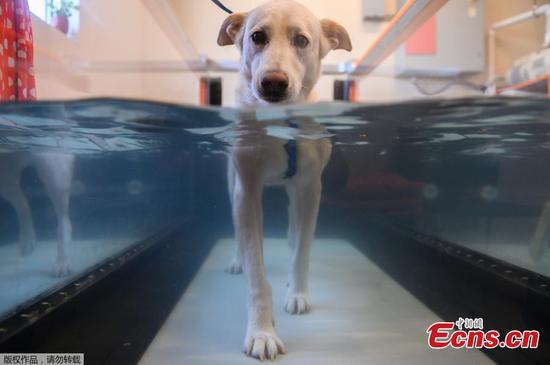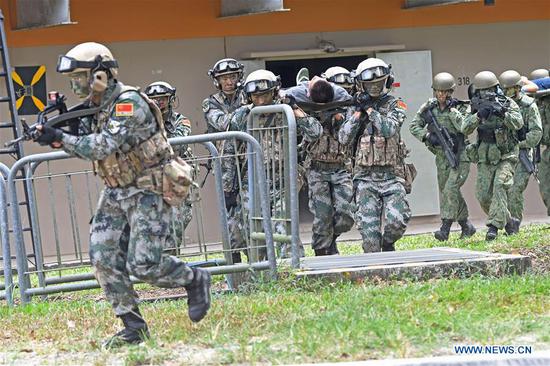
A China Eastern Airlines employee scans a battery--free electronic baggage--checking tag at Shanghai Hongqiao International Airport. Photo/China News Service)
China Eastern Airlines and China Southern Airlines are planning to introduce battery-free electronic baggage-checking tags, that allow passengers to track the luggage status on their mobile phones, at the Beijing Daxing International Airport from next month.
Passengers can apply for e-tags on their cellphone apps. The e-tag is similar in size to an iPhone 8, and is like an ID card for the suitcase. When passengers arrive at the airport, they can self-check-in the luggage with the e-tag and self-service machines, and check luggage status by scanning the bar code, the two State-owned carriers said.
Through the apps, the systems will generate bag tag numbers and transmit the data to the e-tag through Bluetooth. After a few seconds, the electronic ink screen of the bag tag will display information such as the bar code and flight numbers.
Every year, about 250 million paper baggage-checking tags are produced in China, which requires a huge amount of special printers and disposable materials, costing over 100 million yuan ($14.5 million).
Last year, civil aviation passenger volume reached 610 million in China, according to the Civil Aviation Administration of China. Replacing all paper tags with e-tags could help save about 150 metric tons of paper.
On July 25, China Southern became the first domestic carrier to use e-tags on its flights from Guangzhou, Guangdong province. On July 30, China Eastern started to use e-tags on flights between Shanghai and Beijing. In the next few years, China Eastern said it will use e-tags at more major routes and hub airports, and will also provide individual tailored e-tags.
"We have been devoted to developing and launching more services and facilities that would make travel more convenient," said Yao Yun, deputy general manager of the global baggage control center at China Eastern Airlines.
"Besides, China Eastern has been in touch with the Daxing airport, and remote luggage drop and affiliated services would be introduced at a later stage, backed by advanced technologies and sound regulatory measures," he said.
This year, China Eastern is expected to transport 50 million units of luggage. The cost of paper tags and disposable chips for luggage tracking would be around 20 million yuan to 30 million yuan. Replacing paper tags by e-tags would lead to huge cost savings, the company said.
Such reusable e-tags are waterproof, and the images can be saved permanently or changed easily. The e-tags show images by reflecting natural light, and produce electricity through a near-field communication sensor. The technology is in accordance with the baggage check-in requirements of the Civil Aviation Administration of China.
When it comes to the overseas markets, Lufthansa, Austrian Airlines, British Airways and all major US carriers have started trying out e-tags for some years, and they have not popularized the usage yet.
British Airways cooperated with ViewTag, a digital luggage tag company, and its tag can be used repetitively for more than 3,000 times. From October, the price of such tags will increase to 80 pounds ($90) from 64 pounds during the promotional period.
"The preferred solution would be electronic ink bag tags as it requires no power to maintain its content and only requires power when the content needs to be changed," a guideline from the International Air Transport Association said.
IATA also said during the four key points of luggage transportation, which are luggage delivery, loading, transit, and arrival, carriers should be able to track the luggage and reduce the chances of lost baggage and wrong transfers.















